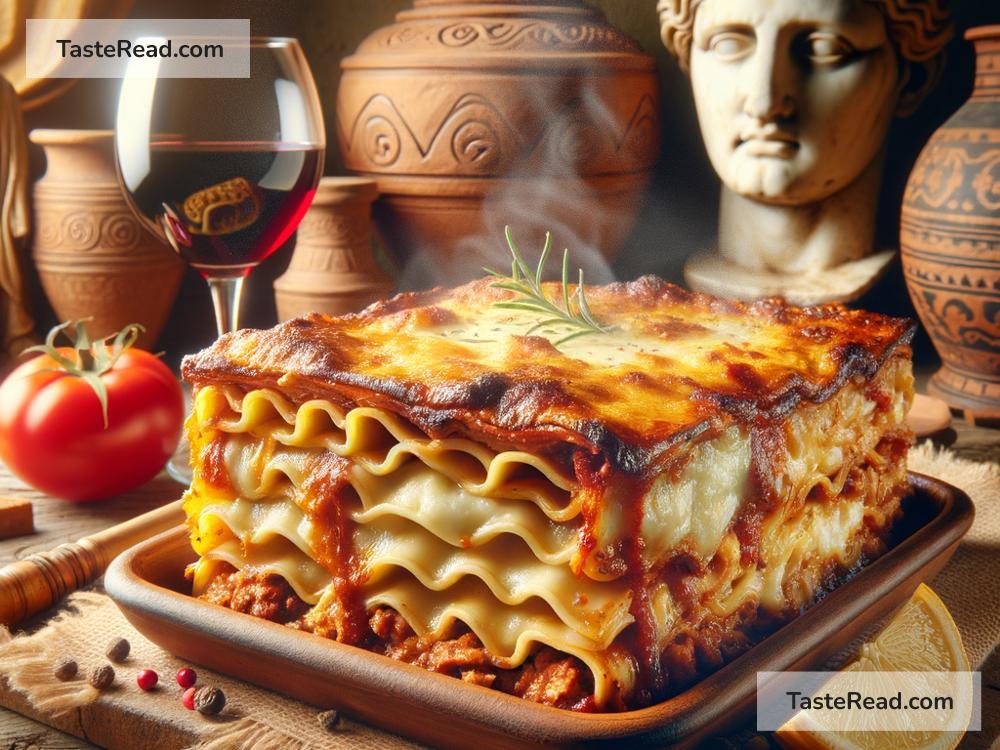Title: From Ancient Rome to Modern Times: The Evolution of Lasagna
It’s hard to find someone who doesn’t like lasagna. This rich, comforting dish has traveled through time, from the ancient roads of Rome to our modern-day kitchens, evolving into the beloved staple it is today. But how did lasagna come to be, and how has it changed over the centuries? Let’s embark on a cheesy, saucy journey through time to explore the evolution of lasagna.
The Ancient Foundations
Our story begins in ancient Rome, the birthplace of a dish called “laganum.” This early ancestor of lasagna wasn’t exactly the layered delicacy we know today. Instead, laganum was more of a simple flatbread, made from wheat flour and water. Roman cooks would bake these flatbreads and occasionally layer them with other ingredients. Although it wasn’t lasagna as we know it, this was the first step towards the layered dish.
Middle Ages Makeover
As we shuffle through the pages of history to the Middle Ages, lasagna takes on a new form. Thanks to trade and exploration, new ingredients like cheese made their way into the culinary scene. Lasagna began to evolve, incorporating these new flavors. The first recipes resembling modern lasagna started to appear, featuring layers of flat pasta sheets, cheese, and sometimes meat or vegetables. It was in this era that lasagna started to look and taste more like the dish we’re familiar with.
A Renaissance of Flavors
Moving forward into the Renaissance, lasagna’s popularity continued to grow, especially amongst Italy’s elite. Chefs competed to create the most extravagant lasagnas, layering in rich ingredients like truffles, creamy béchamel sauce, and even gold leaf! This was a time of culinary innovation, and lasagna’s recipe was refined into an art form, celebrating the richness of Italian cuisine.
Crossing the Ocean
The real transformation of lasagna, however, came with the waves of Italian immigrants to the United States in the late 19th and early 20th centuries. Bringing their culinary traditions with them, they introduced lasagna to a new audience. But, there was a twist. Ingredients that were common back in Italy were scarce in the US, so Italian-Americans improvised. Heavier on meat and cheese, the American lasagna was born. This version was heartier and more suited to the taste and resources of their new home, making lasagna more popular than ever.
Modern Lasagna Love
Today, lasagna is a global favorite, with countless variations. From the traditional lasagna alla Bolognese, with its meaty ragù and béchamel sauce, to vegetarian options overflowing with spinach, mushrooms, and ricotta cheese, there’s a lasagna for everyone. Some innovative cooks even swap pasta layers for slices of zucchini or eggplant, offering a low-carb version of the dish. Lasagna has proven to be a versatile dish that continues to evolve.
What Hasn’t Changed
Despite the changes in ingredients and methods, some things about lasagna have remained constant. It’s always been a dish about layers, textures, and the balance of flavors. Lasagna’s essence lies in its ability to bring ingredients together in perfect harmony, creating something greater than the sum of its parts. It’s also a dish that embodies comfort, often prepared for family gatherings, special occasions, and to warm the soul.
Conclusion
From the flatbreads of ancient Rome to the cheesy, meaty layers we enjoy today, lasagna has undergone a delicious evolution. Its journey is a testament to the power of culinary innovation and the merging of cultures. Lasagna is more than just food; it’s a piece of history, wrapped in layers of pasta, cheese, and sauce. Whether you prefer the traditional Italian versions or enjoy experimenting with new ingredients, there’s no denying the timeless appeal of lasagna. So, the next time you sit down to enjoy a slice of this layered delight, remember the centuries of history and evolution that helped make it the beloved dish it is today.


